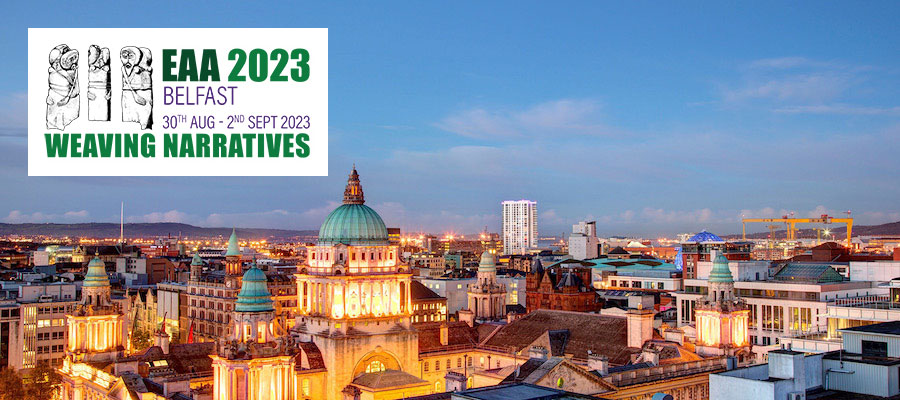Gilding Textiles: New Archaeological Evidence and Scientific Developments on the Production of Metal Threads, session #468 at the 29th European Association of Archaeologists, Belfast, August 30–September 2, 2023
The embellishment of textiles with metals, most particularly gold, can be traced to early cultures, often seen in the ancient practice of adorning the dead in sumptuous garments. Metal threads were interlaced into the weave structure, attached to fabrics using embroidery techniques, or applied to cloth within ornamental bands (galloon, brocaded tablet-woven and tapestry bands, etc.). Another ornamental technique, largely practiced in both Near and Far East, was the use of gold leaf or powder to paint and print fabrics. The trade and exchange of finished textiles, and the sometimes forced relocation of weavers, led to the transfer of technologies and the establishment of highly specialized craftsmanship and workshops.
Extensive scientific works in the 1990s and early 2000s established the basis for the characterization, description and classification of metal threads. These studies, complemented by evidence from archeological finds, have pioneered the research on the production of gold-threaded textiles throughout history, while still leaving some questions regarding raw materials and making processes unanswered.
This session aims at gathering archaeologists, textile historians, and scientists to convene the latest finds and analytical developments on metal decorations, and discuss future research questions. Papers may focus on:
- Recent archaeological discoveries of gold textiles and metal threads
- Techniques of assembling metal threads: solid metal threads including wires and lamellae, and multi-layered complexes with organic substrates, adhesives and top-coat lacquers
- The making of gold and silver printed and painted textiles: gold leaf and powder applications on already woven fabrics, or to coat yarns
- Latest analytical developments for the scientific study of inorganic (metal leaf and powder, pigments, gilding base or preparation layers) and organic (tannins, substrates, adhesives and varnishes) components, using techniques including, but not limited to: optical microscopy, SEM-EDS, FTIR and ATR-FTIR, XRF, PIXE, GC-MS, LC-MS, proteomics, etc.
Session organizers
Caroline Solazzo, Smithsonian Institution
Cristina Scibè, University of Seville
